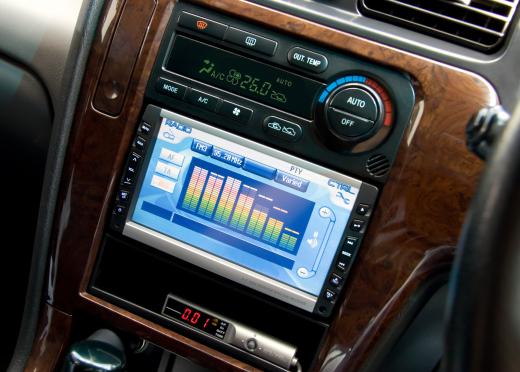A crank pulley is used inside the engine of an automobile to provide power to parts of the vehicle that are not involved in the actual movement of the car. It is found at the end of the crankshaft and transfers the energy the crankshaft generates to various systems in the vehicle. In many cases, the term crankshaft pulley is used to describe the pulley that comes with the vehicle, while crank pulley refers to a component that is installed as an aftermarket upgrade, though the terms are interchangeable.
This pulley transfers energy to the air conditioning, stereo, and alternator, among other components. It is located at the end of the crankshaft, which is used to transform the linear energy that is generated through the pistons into rotational energy. The rotational energy generated by the vehicle's crankshaft turns the crank pulley, which then runs other parts of the vehicle. This type of pulley usually uses ribbing to keep its belt from slipping as it moves around.

A belt known as the serpentine belt is attached to the crank pulley and moves through a large portion of the vehicle's engine. This belt causes other moving pieces to run and provides power to auxiliary parts of the car when they are needed. In many vehicles, the serpentine belt is attached to one or more additional pulleys that help the belt move through the engine. When there are multiple pulleys in use, only the crank pulley, which in this case is called the driver pulley, is powered. The others are unmotorized idler pulleys.
An aftermarket crank pulley can be used to increase the horsepower of a vehicle. These pulleys are designed to weigh considerably less than the pulleys that come standard out of the factory, largely because they do not have harmonic dampeners installed. Though these pulleys may generate excessive vibration at certain rotational speeds, most of the time they are safe to use. The decreased weight of the pulley allows more energy to be used for acceleration and to maintain speed, giving the engine more horsepower. Additionally, an aftermarket pulley is usually designed to transfer less energy to the other parts of the car, meaning that stereo, air-conditioning, and other auxiliary systems have less power than they did before the new pulley was installed.
